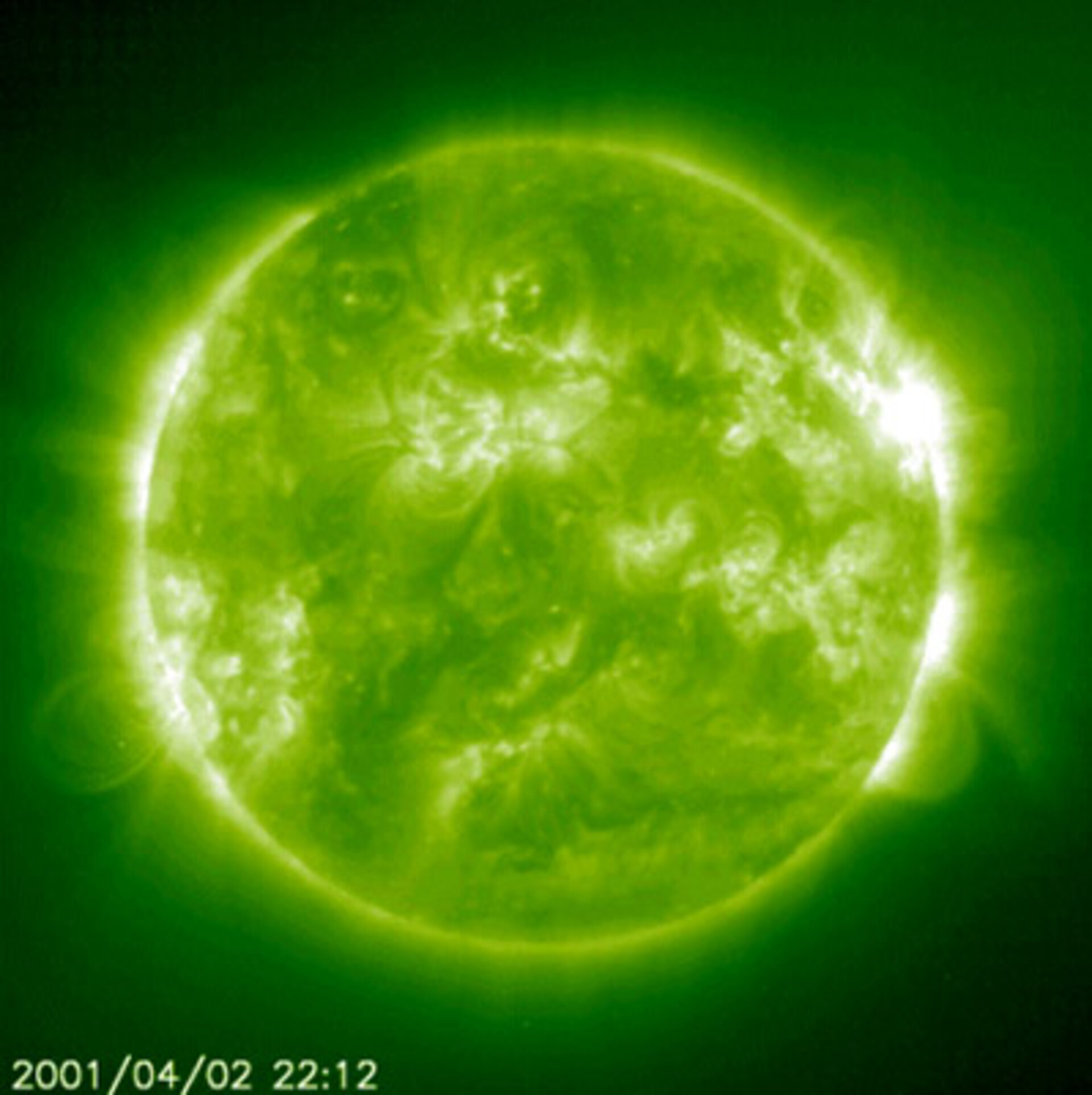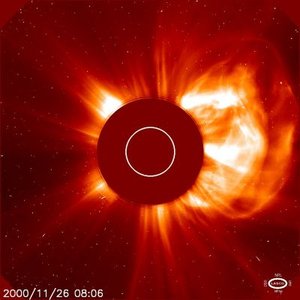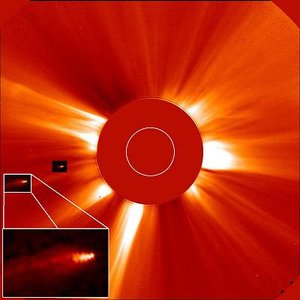SOHO records a giant flare on the Sun
On Monday 2 April at 23:51 Central European Time (21:51 UT) the Sun unleashed a major solar flare near its northwestern (upper right-hand) side. Originally classified as an X17 flare, it has now been upgraded to X20, and appears to be the biggest flare yet on record.
Monday's flare is the strongest flare since 16 August 1989 when the last X20 flare occurred and is certainly more powerful than the famous 6 March 1989 flare which was related to the disruption of the power grids in Canada. The event was well observed by the ESA-NASA SOHO spacecraft.
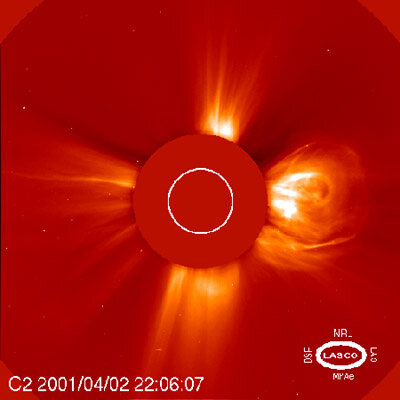
This latest event hurled a coronal mass ejection into space at an impressive 72 million km/hr. Fortunately Earth was not directly in the line-of-fire so the impacts will probably be less severe than from the previous giant flares.
The flare occurred in the active region 9393 which includes the gigantic sunspot group that has drifted across the solar disk during the last week. This was the largest sunspot group to occur in 10 years - 13 times the surface area of Earth at its largest extent. The active region has produced a series of solar flares and coronal mass ejections during the last week. One of the mass ejections produced a powerful geomagnetic storm that raged for more than 24 hours this weekend, dazzling sky watchers who saw the aurora borealis as far south as Mexico.
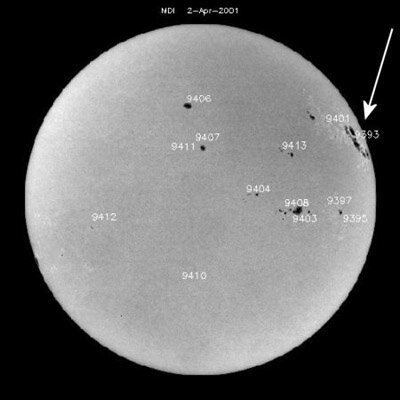
Flare-related events also generated a storm of high-velocity particles that, in greater numbers and energies, can affect sensitive electronic equipment in space. The number of particles with ten million electron-volts of energy in the space near Earth is now 10,000 times greater than normal. The increase of particles at this energy level still poses no appreciable hazard to air travelers, astronauts or satellites, and this radiation storm is rated by the NOAA as a moderate S2 to S3, on a scale that goes to S5.


